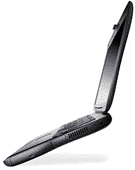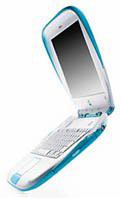Mac Musings
The Best Macs Ever
Daniel Knight - 3 January 2000 -
With 1999 behind us and Macworld Expo starting on Tuesday, it's the perfect opportunity to look at all Macs past and present, choosing the best Apple has offered.
Best Compact Mac
In the beginning, there was only The Macintosh, an odd looking beige computer with a 9" b&w screen. Apple continued using that basic design from 1984 until the last compact Mac, the Colour Classic II, was discontinued in 1995.
There are only two contenders for best compact Mac: the SE/30 (Jan. 1989 to Oct. 1990) and the Colour Classic II or Performa 275 (Oct. 1993 to Nov. 1995).
 The SE/30 has been a perenial favorite. Even
after ten years, there's still good demand for it on the used
market. Of all the compact Macs made, the SE/30 was the only one
designed to take up to 128 MB of memory. It had a 16 MHz 68030 and
a single processor direct slot (PDS) that could accept an
accelerator, network card, or video card. It made a great little
server that took up very little space.
The SE/30 has been a perenial favorite. Even
after ten years, there's still good demand for it on the used
market. Of all the compact Macs made, the SE/30 was the only one
designed to take up to 128 MB of memory. It had a 16 MHz 68030 and
a single processor direct slot (PDS) that could accept an
accelerator, network card, or video card. It made a great little
server that took up very little space.
The Colour Classic II (CCII) was one of very few models that
Apple never sold in the home market, so most U.S. users have never
seen one. It was a bit larger than the SE/30,  had a color monitor, ran at twice the speed
(33 MHz), and could handle up to 36 MB of memory. It used an LC PDS
for expansion, allowing the addition of an accelerator, ethernet
card, or video card.
had a color monitor, ran at twice the speed
(33 MHz), and could handle up to 36 MB of memory. It used an LC PDS
for expansion, allowing the addition of an accelerator, ethernet
card, or video card.
Both the SE/30 and Colour Classic II can be accelerated with a 68040 upgrade. Both can take an ethernet card. I don't know of any combined accelerator/ethernet card for the SE/30, so to add both you'd need a SCSI-ethernet adapter.
For the CCII, there is the Sonnet Presto Plus, which combines a 33 MHz 68040 or 68LC040 with an ethernet port and 32 MB of additional memory. I'd be hard pressed to justify spending US$300-400 for the upgrade, but the '040 upgrade and additional memory would make the CCII one sweet computer.
Overall, unless you need more than 36 MB of memory, I lean toward the Colour Classic II as the best compact Mac ever, but not by a big margin.
Best 68030-based Mac
From the introduction of the 16 MHz Macintosh IIx in September 1988 until the 33 MHz PowerBook 150 was discontinued in October 1995, the 68030 was a staple of the Apple computer line. But no model raised the bar higher than the "wicked fast" Macintosh IIfx, a 40 MHz barn burner in the era of 33 MHz PCs.
With room for a 5.25" hard drive, six NuBus slots, and a 40 MHz system board, the IIfx is a best buy on the used market at prices typically under $100 including an accelerated video card. It's a great server and even a decent web machine.
Not that it isn't without a few drawbacks. It had an unusual SCSI implementation and took a different kind of memory from any other Mac, which earned it the Road Apple label (just barely). If you ever decide to get a IIfx, make sure it has the memory you need or have a ready source for it.
Best PowerBook, pre-PPC
No contest here: the PowerBook 550c (again, a model never sold in the States) was the best 680x0 PowerBook ever. It used a full 68040, not the stripped down 68LC040, ran at 33 MHz, supported up to 36 MB of memory, and has a 640 x 480 10.4" color screen.
The runner-up in this category is the PowerBook 540c, which matched the 550c in all ways but one: it used the FPU-less 68LC040 processor instead of the 68040. These are sometimes available on the refurbished market for around US$600 with 20 MB of memory, making them a very good value in portable computing.
Other benefits of the PowerBook 500 series, and the main reason they beat out the equally fast PowerBook 190cs as the best pre-PPC PowerBooks, are the internal modem and internal ethernet port. On the PB 190, the user had to buy a PC Card to add a modem or any network capability beyond LocalTalk.
Best 68040-based Mac
The first Quadras shipped in October 1991, but the line didn't reach it's zenith until the Quadra 840av was introduced in July 1993. Like the IIfx, the 840av was a 40 MHz speedster, the fastest 68040-based Mac ever.
But that's not the main reason it's the best Quadra. Besides raw speed, Apple built in AV circuitry to digitize sound and video along with an AT&T digital signal processor running at 66 MHz to handle sound and video input.
The 840av also introduced the high speed serial port known as the GeoPort, which was up to eight times faster than Apple's standard serial port.
There were teething problems, but the 840av became very stable under System 7.5.5 - and runs very nicely indeed under Mac OS 8.1.
 Best PowerBook, PPC
Best PowerBook, PPC
In March 1994, Apple introduced a trio of Power Macs, forever changing the face of the Macintosh. The first PowerBook with a PowerPC processor, the 5300, came out in 1995. Today's iBook and PowerBook G3 continue the tradition.
Each PowerBook has been a compromise of size, weight, features,
performance, and price. In other words, the perfect PowerBook
doesn't exist - because what's perfect varies from user to user.
Some want small and love the 2400.
 Others want power, opting for the PB G3/400. And the
iBook is designed for those most
concerned about price or ruggedness.
Others want power, opting for the PB G3/400. And the
iBook is designed for those most
concerned about price or ruggedness.
Naming one best model is subjective and probably the place where my biases become most evident. I like a big screen. I want one bigger than any current PowerBook offers. And I also want desktop performance, so anything slower than a G3 wouldn't cut it.
That said, the choice becomes obvious: the PowerBook G3 "bronze keyboard," otherwise known as Lombard, with its 14.1" 1024 x 768 screen. I think the 400 MHz version with DVD is overkill, so from the perspective of performance, features, and finances, I'd call the 333 MHz Lombard the best. I think the premium for DVD and 20% more power are insufficient to justify the extra cost of the 400 MHz model.
That said, I'm looking forward to a thinner, lighter PowerBook with a higher-pixel screen (at least 1152 x 870, better yet with 1280 x 960). Power won't really be an issue, since I'm already content with a 250 MHz G3 computer at home.
 Best Power Mac
Best Power Mac
From 60-80 MHz 601 CPUs in 1994 to 350-450 MHz G4 CPUs today (and probably 500 MHz or more tomorrow), the Power Macs keep offering more power for less money. The option of buying a G3/350 sans modem from the Apple Store for US$1,499 is amazing - I paid nearly that much for my 20 MHz Centris 610 in 1993.
Although some bemoan the lack of a six-slot Power Mac, the four-slot Power Mac G4 Sawtooth gets my nod as the best Power Mac to date. The improved memory path and AGP video card boost performance for what would already be a "wicked fast" machine, whether running at 350 MHz or 500 MHz. And in terms of value, the G4/350 with DVD can't be beat.
 Honorable Mention
Honorable Mention
At US$1,299 with a 400 MHz G3 and 64 MB of memory, the iMac DV deserves mention. It's not Apple's fastest computer. In fact, it's deliberately designed down to the home market: no digital output for flat panel displays, no expansion slots, no room for an internal Zip drive.
But the iMac revolutionized Apple, bringing it back to its roots. Remember the compact Macs? The iMac updates the concept for the internet era, where a 9-10" screen simply wouldn't cut it.
The iMac is the epitome of the computer as a tool. It's not a tweaked out geek machine. It's not an underpowered machine designed to barely satisfy first time buyers. It's not the last word in anything but practical design - where the Wintel world is trying hard to catch up.
For a lot of people, the iMac is their best Mac. It's certainly Apple's most important computer - over half the Apple computers sold in fiscal 1999 were iMacs, which sold at a pace almost 50% higher than the Power Macs.
Conclusion
Apple has a tradition of great computers, from the innovative Mac 128 through the radically designed iBook and iMac. They also have a tradition of offering a lot of graphics power on hardware that keeps working years after Wintel boxes have been replaced.
Whether you're working on the low end with a Quadra or the top with a Power Mac G4, you know Apple makes good equipment, good tools for the job.
And the best is yet to come.
Join us on Facebook, follow us on Twitter or Google+, or subscribe to our RSS news feed
Dan Knight has been using Macs since 1986, sold Macs for several years, supported them for many more years, and has been publishing Low End Mac since April 1997. If you find Dan's articles helpful, please consider making a donation to his tip jar.
Links for the Day
- Mac of the Day: Unitron Mac512, (1985. Unauthorized Brazilian clone of the Mac 512K.)
- Support Low End Mac